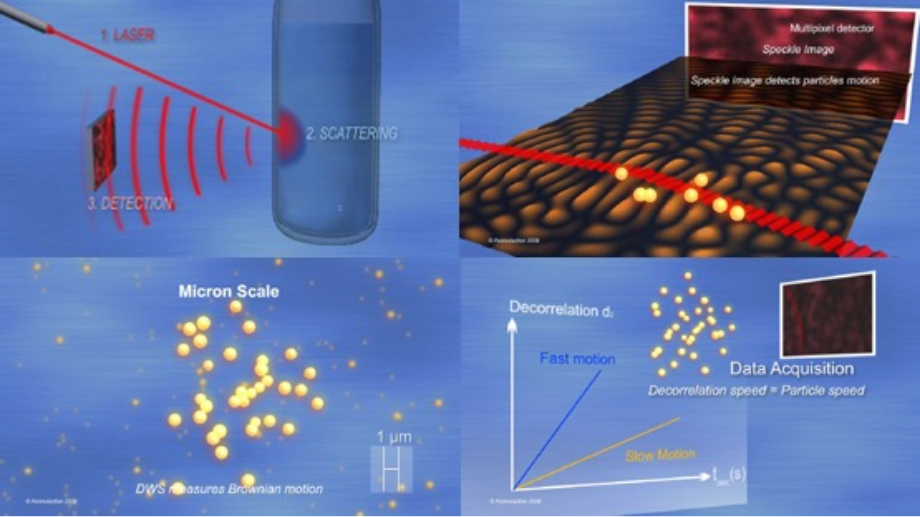CURINSCAN
Attribute:
SKU : RHEOLASER COATING
DIFFUSING WAVE SPECTROSCOPY (MS-DWS)
Categories : Product Brand , Formulaction , Thermal Analysis , Rheology , Application , Materials ,
Brand : Formulaction
Share
- Determine rheological properties in bulk
- Monitor evolution (gelation, stability…)
- Monitor drying of coatings
- Monitor phase transitions
How does it work?
A laser beam is scattered by moving particles in a specific pattern. A Camera monitors the image of the resulting interfering wave (speckle). Depending on the mobility of the particles the pattern fluctuates. Pixel by pixel analysis of the speckle allows to plot decorrelation curve as a function of characteristic time and directly correlates to particle motion speed.

The decorrelation curve can be analyzed using different physical models allowing to determine multiple structure properties
In drying experiments (using Curinscan), the Fluidity Factor can be monitored over time. It is inversely proportional to characteristic decorrelation time and it provides information about sample fluidity. It allows monitoring of drying and film formation processes. Drying mechanisms (evaporation, packing, particle deformation…) can be detected and a unique signature profile of coating drying can be obtained.






